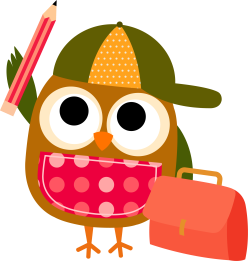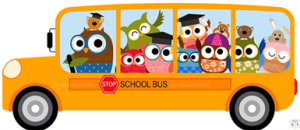August News
August 1, 2015
A Message From the Principal:
Dear Parents,
As the summer comes to a close, we are excited for the upcoming  2015-2016 School Year. We are excited and thankful you have decided once again to choose Merryhill School for your child’s continuing education and we look forward to seeing “Oh, the Places” our students will go in the new year!
2015-2016 School Year. We are excited and thankful you have decided once again to choose Merryhill School for your child’s continuing education and we look forward to seeing “Oh, the Places” our students will go in the new year!
Please check out our August Activity Calendar for the remaining summer activities. Please join us on Wednesday, August 19th for our End of Summer Carnival from 4:30-5:30. We will have games, activities, face painting and refreshments.
August Activity Calendar
Merryhill School will be closed on Friday, August 21st for Professional Development Day. We, as early childhood educators, use Professional Development Days to stay current with the latest research and remain ahead of early education standards.
Have a great rest of the summer!
Warmest Regards,
Angel Inman, Principal
& Shirley Gent, Assistant Principal
“Tell me and I forget. Show me and I remember. Involve me and I understand.”

August Classroom Newsletters
Calendars
Reminders
- Please remember to bring extra changes of clothes for your child. We especially need extra clothes for sizes 2, 3, & 4 (boys and girls), any donations would be greatly appreciated!
- Please sign up for our Celly Text Alerts. This is the fastest way we can communicate to our families for school closures, important reminders, etc. Please see the front desk for information.
- Check this website if we have a closing due to weather!!!
- Per state licensing, please send your child in closed-toe and closed-heel shoes; such as, sneakers. This will help prevent your children from being injured.
- Please remember to sign your child In and Out daily.
- For the safety of all our children, it is required that a parent/adult escort your child to their classrooms. Please also remember an authorized adult (18 years and older) must sign children out for the day.
Elementary Age After School & Camp Program
Winter, Spring & Summer Camp full day schedules
Please consider us for your child’s after school program! We pick up at the following elementary schools:
- Keller ISD: Florence, Shady Grove, Willis Lane, Liberty, Park Glen, Parkview, Keller-Harvel
- Birdville ISD: North Ridge, Green Valley
- International Leadership

For Parents
Reestablishing Routines for Your Preschooler
Maintaining Order & Staying on Track
As we reach the end of summer, now is a great time to reestablish comforting routines for your preschooler. Routines help children build self-confidence and independence, cope with transitions, and gain a better understanding of the world around them.
Our Links to Learning curriculum promotes students’ social and emotional development, which is necessary for following directions and demonstrating self-control. Our teachers focus on the importance of healthy living and safety routines in the Wellness component of our curriculum.
Here are some examples of ways we establish routines in the classroom, as well as ideas for you and your child to do at home.
TODDLERS (ages 1-2):
In the classroom: Naptime gives children an opportunity to recharge and reboot. Our toddlers transition from napping in cribs to napping in cots. Teachers schedule naps at the same time and in the same area of the classroom every day. Soothing music is played to help toddlers wind down.
At home: Talk with your child’s teacher about the naptime routine at school. Minimize naptime battles by attempting to maintain the same routine at home.
Recommended reading: Naptime by Elizabeth Verdick
BEGINNERS (ages 2-3):
In the classroom: Around age two, children begin to learn basic self-help skills such as dressing themselves. Our Beginner students practice snaps and zippers, and are encouraged to complete basic sequences like putting on socks before shoes.
At home: Offer your child a choice during routines in order to increase his interest in the activity. For example, lay out two outfit options for him to wear. Allow him to choose the outfit he prefers. Give him ample time to dress himself before offering assistance. Praise every attempt.
Recommended reading: Let’s Get Dressed by Caroline Church
INTERMEDIATES (ages 3-4):
In the classroom: Teachers focus on the importance of sleep in the Wellness component of our curriculum. Students read and act out We’re Going on a Bear Hunt by Helen Oxenbury and Michael Rosen. They discuss why the bear was sleeping, and why sleep is important.
At home: Create a bedtime routine for your child. For example, bathe, brush teeth, read a story, go to sleep. Follow the same sequence of events at the same time and in the same order every night.
Recommended reading: The Going-to-Bed Book by Sandra Boynton
PRE-K/PRE-K 2 (ages 4-5):
In the classroom: Our older students follow an arrival routine at the start of every school day. They sign themselves in, say goodbye to their parents, and put away their belongings. Students learn rhymes and songs to help remind themselves what to do when they enter the classroom.
At home: Mornings are critical for setting the tone for a successful and positive day. Establish a morning routine for your child with a maximum of four steps. For example, get dressed, brush hair, brush teeth, eat breakfast.
Recommended reading: Waking Up is Hard to Do by Neil Sedaka & Howard Greenfield
Following routines helps children develop the habits of responsibility that will be crucial for their future success and well-being. Kindergarten students are expected to follow instructions, listen to their teacher and complete specific tasks. By setting routines in the preschool years, your child will be better prepared as he enters elementary school and beyond.
– Lauren Starnes, PhD – Director of Early Childhood Education
This entry was posted in Keller. Bookmark the
permalink. Both comments and trackbacks are currently closed.

August News
August News
A Message From the Principal:
Dear Parents,
As the summer comes to a close, we are excited for the upcoming 2015-2016 School Year. We are excited and thankful you have decided once again to choose Merryhill School for your child’s continuing education and we look forward to seeing “Oh, the Places” our students will go in the new year!
2015-2016 School Year. We are excited and thankful you have decided once again to choose Merryhill School for your child’s continuing education and we look forward to seeing “Oh, the Places” our students will go in the new year!
Please check out our August Activity Calendar for the remaining summer activities. Please join us on Wednesday, August 19th for our End of Summer Carnival from 4:30-5:30. We will have games, activities, face painting and refreshments.
August Activity Calendar
Merryhill School will be closed on Friday, August 21st for Professional Development Day. We, as early childhood educators, use Professional Development Days to stay current with the latest research and remain ahead of early education standards.
Have a great rest of the summer!
Warmest Regards,
Angel Inman, Principal
& Shirley Gent, Assistant Principal
“Tell me and I forget. Show me and I remember. Involve me and I understand.”
August Classroom Newsletters
Calendars
Reminders
Elementary Age After School & Camp Program
Winter, Spring & Summer Camp full day schedules
Please consider us for your child’s after school program! We pick up at the following elementary schools:
For Parents
Reestablishing Routines for Your Preschooler
Maintaining Order & Staying on Track
As we reach the end of summer, now is a great time to reestablish comforting routines for your preschooler. Routines help children build self-confidence and independence, cope with transitions, and gain a better understanding of the world around them.
Our Links to Learning curriculum promotes students’ social and emotional development, which is necessary for following directions and demonstrating self-control. Our teachers focus on the importance of healthy living and safety routines in the Wellness component of our curriculum.
Here are some examples of ways we establish routines in the classroom, as well as ideas for you and your child to do at home.
TODDLERS (ages 1-2):
In the classroom: Naptime gives children an opportunity to recharge and reboot. Our toddlers transition from napping in cribs to napping in cots. Teachers schedule naps at the same time and in the same area of the classroom every day. Soothing music is played to help toddlers wind down.
At home: Talk with your child’s teacher about the naptime routine at school. Minimize naptime battles by attempting to maintain the same routine at home.
Recommended reading: Naptime by Elizabeth Verdick
BEGINNERS (ages 2-3):
In the classroom: Around age two, children begin to learn basic self-help skills such as dressing themselves. Our Beginner students practice snaps and zippers, and are encouraged to complete basic sequences like putting on socks before shoes.
At home: Offer your child a choice during routines in order to increase his interest in the activity. For example, lay out two outfit options for him to wear. Allow him to choose the outfit he prefers. Give him ample time to dress himself before offering assistance. Praise every attempt.
Recommended reading: Let’s Get Dressed by Caroline Church
INTERMEDIATES (ages 3-4):
In the classroom: Teachers focus on the importance of sleep in the Wellness component of our curriculum. Students read and act out We’re Going on a Bear Hunt by Helen Oxenbury and Michael Rosen. They discuss why the bear was sleeping, and why sleep is important.
At home: Create a bedtime routine for your child. For example, bathe, brush teeth, read a story, go to sleep. Follow the same sequence of events at the same time and in the same order every night.
Recommended reading: The Going-to-Bed Book by Sandra Boynton
PRE-K/PRE-K 2 (ages 4-5):
In the classroom: Our older students follow an arrival routine at the start of every school day. They sign themselves in, say goodbye to their parents, and put away their belongings. Students learn rhymes and songs to help remind themselves what to do when they enter the classroom.
At home: Mornings are critical for setting the tone for a successful and positive day. Establish a morning routine for your child with a maximum of four steps. For example, get dressed, brush hair, brush teeth, eat breakfast.
Recommended reading: Waking Up is Hard to Do by Neil Sedaka & Howard Greenfield
Following routines helps children develop the habits of responsibility that will be crucial for their future success and well-being. Kindergarten students are expected to follow instructions, listen to their teacher and complete specific tasks. By setting routines in the preschool years, your child will be better prepared as he enters elementary school and beyond.
– Lauren Starnes, PhD – Director of Early Childhood Education